Benefits of dung beetles for prime lamb farms – Enhanced Producer Demonstration Site (EPDS)
Download a printable version of this page: Benefits of dung beetles for prime lamb farms ![]() [PDF File - 524.7 KB]
[PDF File - 524.7 KB]
Research iin cattle systems has shown that dung beetles are able to reduce pasture fouling, improve nutrient cycling and soil structure, and increase pasture production (Doube 2008). There is also evidence that by burying dung, dung beetles reduce the number of worm parasite eggs that hatch, which can lower internal parasite infections in livestock (Coldham 2011).
Research relating to dung beetles in sheep production systems, however, is limited. Mature sheep produce around 2.25 kg of wet dung each day, and with the Australian sheep flock projected to reach 74.4 million head in 2022 (MLA sheep projections), over 61 million tonnes of dung will be dropped onto Australian pastures yearly, providing a valuable source of nutrients, particularly given the rising costs of synthetic fertilisers.
For these reasons, the South West Prime Lamb (SWPLG) group embarked on a project to find out what local dung beetle species were attracted to sheep dung at different times of the year – as well as demonstrate the benefits from beetles. Ultimately, the group hoped to encourage further interest and understanding of dung beetles and the adoption of practices to grow dung beetle populations.
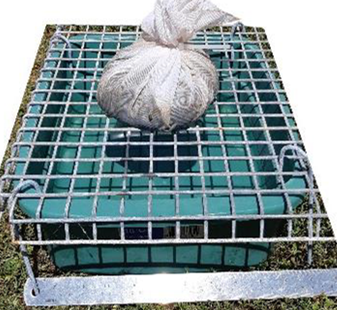
The demonstration
SWPLG members undertook monthly trapping using sheep dung baits (Fig 1), to identify what dung beetles were active in sheep systems in southwest Victoria, when they were active and importantly when there were seasonal gaps in dung beetle abundance.
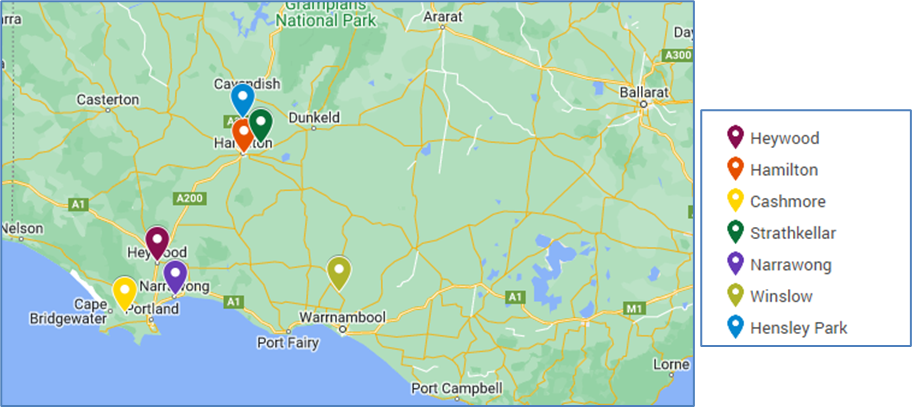
Four producers trapped beetles from June 2019 - May 2020 and a further four producers trapped from December 2020 - November 2021. Beetle species were identified by the Dung Beetle Ecosystems Engineers (DBEE) project.
The impact of dung beetles on soil fertility was investigated through dung burial trials, established over four sites with different soil types. Bubas bison, one of the four deep tunnelling dung beetles found in Australia, was used for the trial and is known to bury dung to 60 cm (Fig 3). The trial compared 50x50 cm plots of Dung+Beetles, Dung Only and Control (no dung or beetles) (Fig 4). Five kilograms of sheep dung was added over ten weeks to the Dung+Beetle and Dung Only plots, and 15 pairs of B. bison were added to the Dung+Beetle plots. Spare plots were excavated in spring to observe the action of dung beetles, and soil testing was undertaken across treatments the following winter at 0-10, 10-30 and 30-60 cm.

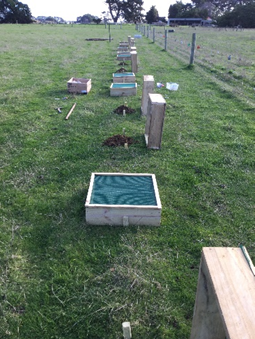
Key findings
Dung beetles active on sheep dung in southwest Victoria
Twelve species were trapped across the eight properties including introduced Bubas bison, Euoniticellus fulvus, Euoniticellus pallipes, Onitis aygulus, Onthophagus binodis and Onthophagus taurus. Other species included native Onthophagus australis, Onthophagus mniszechi, Onthophagus posticus and Onthophagus auritus. Two dung dwellers (not true dung beetles) were also found; Aphodius fimetarius, Aphodius lividus.
O. taurus and E. fulvus were the prolific species, active over the warmer months. A noticeable gap in introduced dung beetle abundance was observed from late autumn to early spring, however the native O. mniszechi was active year-round at Cashmore, Narrawong and Heywood.
Benefits for soil fertility
Large increases in phosphorus and potassium were measured to depth through the action of deep tunnelling by Bubas bison. Figures 6 and 7 show phosphorus and potassium levels measured at 0-10, 10-30 and 30-60 cm depths one year after the trial commenced at Site 1. Dung Only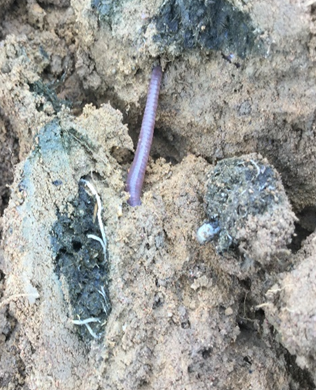 plots had the highest surface phosphorus and potassium levels, however dung beetles had mobilised nutrients moving them down the soil profile into the 10-30 and 30-60 cm zones.
plots had the highest surface phosphorus and potassium levels, however dung beetles had mobilised nutrients moving them down the soil profile into the 10-30 and 30-60 cm zones.
The additional phosphorus measured at 10-30 cm depth in the Dung+Beetle plots across the sites was equivalent to around 1 t/ha of single super valued at approximately $650/ha (not spread). The additional potassium at 10-30 cm depth across the sites equated to between 150 - 430 kg/ha of applied potash valued at approximately $200 - $470/ha (not spread).
High numbers of earthworms were observed under Dung+Beetle plots (Fig. 5), including earthworms that had wrapped around the tunnels of dung. It is likely that this increased activity was from earthworms feeding on buried dung.
We would expect that the tunnelling activity from dung beetles and the increased nutrient levels at depth would drive plant roots further down the soil profile, allowing them to access moisture from deeper down. This could potentially increase the growing season.

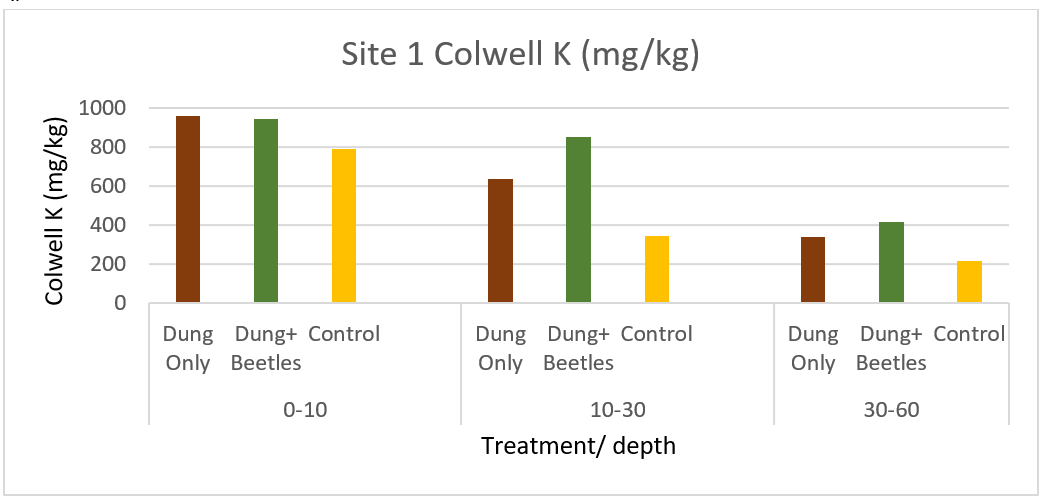
Things to consider for increasing dung beetles on sheep farms
To achieve year-round dung burial, an effective dung beetle population is made up of different species active throughout the year. When there is a seasonal gap of active dung beetles, there is an opportunity to bring in additional species through starter colonies. A list of dung beetle suppliers is available from the DBEE project.
Dung beetle activity can be observed where soil is brought to the surface around dung, or by digging below dung pats with a shovel. Placing dung in a bucket of water is also an effective method for extracting dung beetles, who will float. Alternatively, traps left in paddocks for around 24 hours with a dung bait will attract dung beetles and provide some insights into what beetles are present (Fig. 8).

The use of pasture pesticides and some chemicals to control livestock parasites can directly affect dung beetles. Research on this topic continues. Some producers in the SWPLG have set aside dung beetle refuge paddocks that will remain free of recently drenched animals and insecticides while dung beetle populations are bred and released. The SWPLG are also investigating the effects of drenches and the development of drench tolerance within dung beetle populations.
Where to find out more
Dung Beetle Ecosystem Engineers project https://www.dungbeetles.com.au/
North East Dung Beetle Project https://www.necma.vic.gov.au/Solutions/Dung-Beetles
Dung Beetle Solutions http://www.dungbeetlesolutions.com.au/
References
Doube BM (2008) The pasture growth and environmental benefits of dung beetles to the southern Australian cattle industry. B.ERM.0211 Meat & Livestock Industry: North Sydney, NSW, Australia.
MLA Sheep Projections https://www.mla.com.au/prices-markets/Trends-analysis/sheep-projections/
Acknowledgements
The authors acknowledge: the host producers for participation in the project; the South West Prime Lamb Group (SWPLG) members, Dr Russ Barrow and Graeme Heath from Dung Beetle Ecosystem Engineers (DBEE) and Dr Bernard Doube, Dung Beetle Solutions.
For further information contact:
Bindi Hunter, Agriculture Victoria – Warrnambool
bindi.hunter@agriculture.vic.gov.au
Kate Joseph, Project Officer- SWPLG
primeag@westvic.com.au